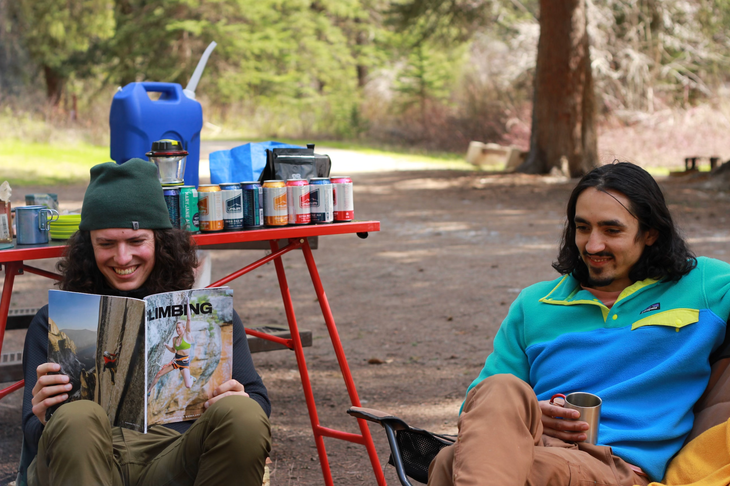Heading out the door? Read this article on the new Outside+ app available now on iOS devices for members! Download the app.
Editor’s Note
I was washing dishes a few months ago when a line from Stavros Halkias’s comedy standup on Netflix grabbed my attention. I set down the bowl I’d been scrubbing, rinsed the suds off my hand, and hit the back button a few clicks.
“Anytime a tech company moves into a cool city, they won’t rest until they’ve turned it into a series of breweries and climbing gyms connected by Lime scooters,” he said.
Ha ha, I thought, and then turned the sink back on.
His bit was a dig at tech companies, but I became fixated on its implications about climbing and the changes our community is facing. Juxtaposing archetypes flashed in my head, where past transfuses to present, where hardmen and women gonzo camping in Yosemite’s caves evolved into tech bros in athleisure on scooters. Halkias’s associations with what climbing is and who engages with it illustrate just how much has changed, which is to say, a lot.
It’s easy to lament the good old days, even for someone like myself, who wasn’t alive for most of them. I will always miss the dirty climbing gyms of my childhood, with their steep crimp lines and the improvement-focused culture. Lately, it feels like we exchanged Gold’s Gyms for a far more expensive membership to the mall—even something as spiritual as climbing can become bought and sold.
But of course, as we barrel through this portal to mainstream culture, climbing has also become more visible and accessible than ever. It is incumbent upon us to welcome these newcomers. For all climbing has given me—professionally, physically, emotionally, and spiritually—I can’t wait to see what it gives to the world.
Many of the stories included in this issue reflect change. Award-winning author Astra Lincoln describes her experiences during her first climbing trip post-traumatic brain injury; with a mind and body that behaved differently, Lincoln struggled to reclaim her hungry spirit. In his investigation of the rapid—and illegal—development of Merriam Woods, Michael Wejchert asks how we as a community can grow beyond our self-serving, free-wheeling antics. Digital editor Anthony Walsh profiles the first generation of climbers born and raised in an increasingly modernized El Chaltén, Patagonia. In a must-read short essay, Will Esposito dives into the ending of climbing careers and his faltering motivations. Digital editor Steve Potter masterfully reflects on what it means to have become his teenage fears, and how things aren’t so bad.
In today’s age of immediacy, where the morning’s news is ancient history by sundown, some may rightfully ask why, in revamping an antiquated medium, we’re seemingly clinging to the past. First published in 1967, Ascent is admittedly a dinosaur. Our aim here is not to indulge stubborn ethos but to revitalize a tangible and lasting tribute that has long stood for this community and its stories. We can accept change—the good, the bad, and the inevitable—but even while doing so we need not forget our roots. So this one, dear reader, is for you.
—Delaney Miller
Buy here
Contents:
- “First Generation Patagonia” by Anthony Walsh
- “The Comeback” by Holly Yu Tung Chen
- “What Happened to All the Dogs?” by Delaney Miller
- “Out of the Woods” by Michael Wejchert
- “Climbing Beyond the Binary” by Ryleigh Norgrove
- “Messages from the Skull Cave” by Steve Potter
- “The Terror of Turning a Corner” by Astra Lincoln
- “Overlooked” by Anthony Walsh
- “On Ending” by Will Esposito
- “Crag Dog” by Jeff Jackson
- “The Learning Curve” by Duane Raleigh
- “Paradise in the Natural State” by Zac Cadwalader
- “Mushroom Kingdom” by Quentin Roberts
- “Regression” by Russ Clune
- “Unveiled” by Will Gadd
